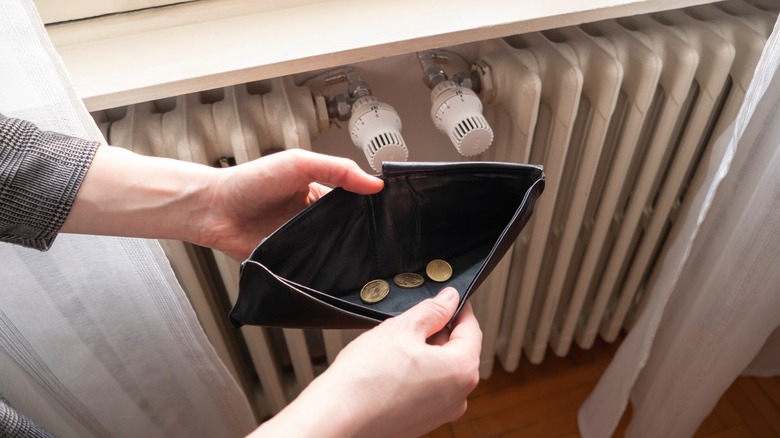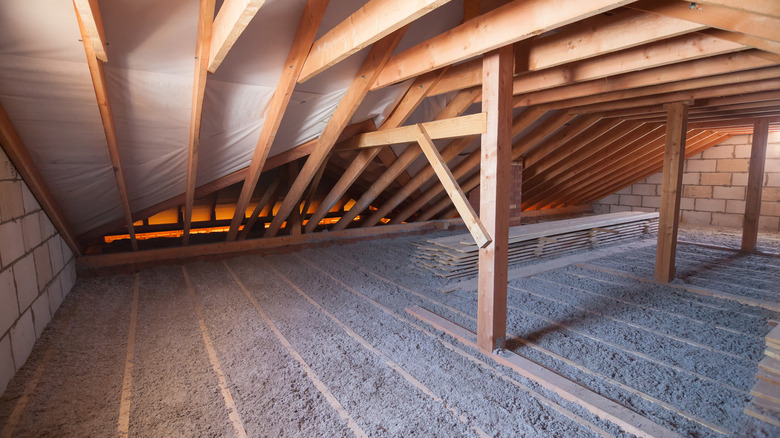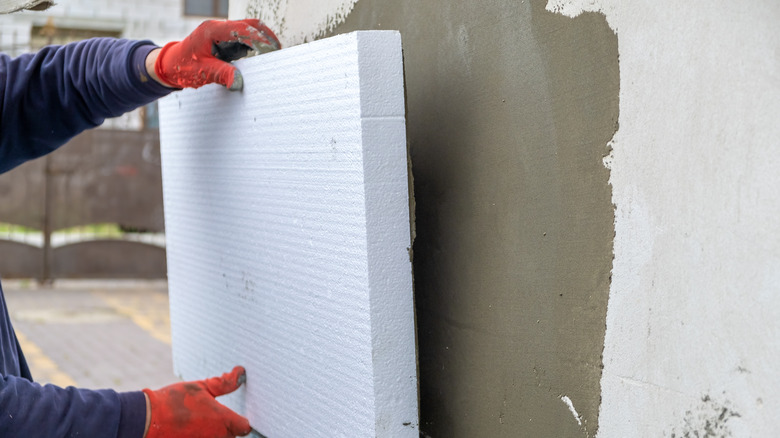The Easiest Way To Save On Your Natural Gas Bill That You Never Knew About
Natural gas is a widely used resource across the globe, and for many good reasons. According to Alinta Energy, natural gas is a reliable source of energy that can provide instant heat without having to wait for warming to begin. It's also much less expensive in comparison to electricity as a source of heat. Newer equipment also allows you to heat different parts of your home at different times, making it an energy-efficient choice. It's also better for the environment, owing to reduced carbon emissions compared to other energy sources such as coal.
However, if you use natural gas in your home for heating purposes, you've most likely noticed a spike in your gas bill during the winter. Luckily, there are ways to save on your gas bill. Keep reading to find out one of the most effective ways to curb your natural gas bill and save some extra cash.
Home insulation
A poorly insulated home is one common reason that leads to higher gas bills. According to Dodo, a well-insulated home will use up less gas energy to keep your home warm. They explain that a home with good insulation keeps its occupants warmer in the winter and cooler in the summer and spends less money overall. In the winter, an uninsulated home may lose up to half of the heat it generates via the roof, while in the summer, it can gain up to 60% of the heat through the ceilings and the walls.
A well-insulated roof can stop cold air from entering your home while keeping warm air inside, reducing the amount of time you need to run your gas heater. Therefore, investing in improved insulation is a great way to reduce the amount of money spent on gas and electricity bills. According to Moving.com, insulating your water heater and air ducts can also prevent heat leaks, making your home a more energy-efficient one.
Upgrade your home's insulation
Build suggests that there are a few spots in any home that need to be given special attention as far as insulation goes. For example, your garage door, attic, exterior walls, and basement must be very well insulated as these are all places that can allow air to move in and out of the building. They recommend choosing insulation with a higher R-value when deciding on which type of insulation to go for.
The Washington Post also recommends inspecting for holes around the plumbing vent stacks, dropped soffits, recessed light fixtures, duct registers, and gaps around the attic hatch. They note that, depending on the location and the size of the gap, you can seal it with caulk, expanding foam, or insulation that has been wrapped in a plastic bag. Weather-stripping is probably the most effective solution in the areas around doors and windows, and flashing might also be needed in certain instances.


